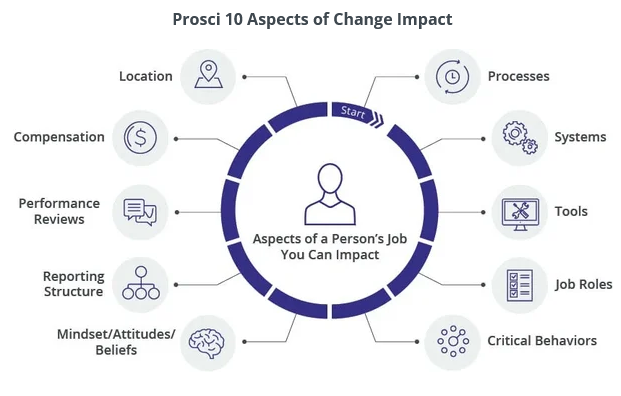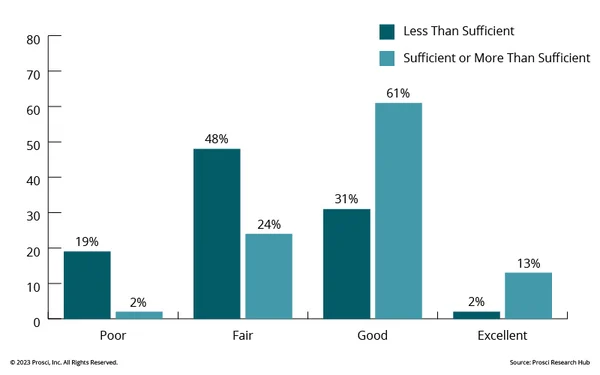Framework 190 Effective Change Strategy (key components)
pakistan
1. Understanding the change initiative(some key questions to help understand the change:
- What is the scope of change?
- What is the impact on different stakeholder groups?
- Are different stakeholders experiencing the same or different impacts?
- What is actually changing, ie organisational structure, processes, systems, job roles, responsibilities, etc with different stakeholders?
- What is the timeframe for implementing the change?
- Are there any other organisational activities going on that could compete with and impact the change?)
2. Assessing change readiness (involves understanding the environment into which you are introducing the change initiatives; some key questions:
- Do management and staff see a need for change? Are they open to it or cynical?
- How has the organisation handled changes in the past? What were the learnings from the past change experiences, ie understand why they were successful or not?
- Do all stakeholders have a clear understanding of the organisation's objectives and understand the 'big picture', ie is the vision shared by all stakeholders?)
- How much change is already happening in the organisation
- Do you need to be careful of change saturation?

(source: Teresa Hauck, 2024))
3. Understanding how change will impact different stakeholders uniquely(assessing the impact on different stakeholders should be done before implementing the change, ie
"...- systems (a combination of people and applications to meet a set of objectives)
- job roles (description of a person's expected activities to perform their job well)
- critical behaviours (essential or vital response of a group or individual in response to an action, environment, person or stimulus)
- processes (which existing workflows will be altered?......)
- tools (system you can use with a specific purpose and objective in mind. It might include mechanical tools or technical objects......)
- location (a physical place that provides facilities for a stated purpose)
- compensation (the amount of the monetary and non-monetary pay provided in exchange for work performed)
- performance reviews (the process of how performance is measured and assessed, taking into account objectives)
- reporting structure (the authority relationships within an organisation to whom people report)
- mindsets/attitudes/beliefs (the mental frame of mind reflected in behaviours).
By mapping out impacted groups, processes, technology and other aspects, you can create specific and targeted plans later in the change management process. This ensures everybody gets the support they need to adapt smoothly..."
Teresa Hauck, 2024)
4. Choosing the change management structure(this will determine who does what and how they interact; some common structures include:
- embedded change manager (where the change management expert is assigned directly and works alongside them throughout the process)
- centralised support (establish a dedicated change management team to provide support and guidance with projects within the organisation.
NB Need to understand and appreciate the importance of including the informal leaders who need to become change champions and the importance of senior management actively supporting the change initiative - see below for more detail.)
- project team lead (this is where change management responsibilities are assigned to a specific person in addition to their existing duties. Ensure that change management responsibilities are clearly defined and allocate the right resources based on needs.)
5. Ensuring senior management support (senior management, especially the most senior manager, must actively support and drive change. They must be highly visible and actively involved; encourage broader organisational support and build a strong network of change champions.)
6. Handling resistance (be proactive by
- anticipating obstacles to the change initiative (need to understand how stakeholders could react when they are impacted by the change)
- identify which parts of the organisation will be more impacted than others
- evaluate different solutions to the same issue
- identify which parts of the organisations prefers the status quo
- identify, analyse and address root causes of resistance (not just the symptoms)
"...by pinpointing potential resistance points upfront, you can develop targeted tactics to address them before they become roadblocks. This proactive approach makes the transition smoother for everyone..."
Prosci, 2024)
7. Resourcedsufficiently (resources include finance, expertise, time, capability, training (both professional and personal), facilities, etc; there is a correlation between sufficient resources and change management effectiveness.

(source: Prosci, 2024)
8. Assessing and understanding the risks (include the human aspect of change and take into consideration:
- how dramatic and widespread is the impact and scope of the change (big changes generally pose a bigger risk)
- how the organisation's culture has handled risk in the past, ie a history of resistance means a higher risk.
Develop a risk grid:

(source: Teresa Hauck, 2024)
9. Establish reinforcement and sustainment activities(the aim is to make change stick; reinforcement and sustainment are important and can impact project outcomes; as people like to return to the status quo, planning for and implementing reinforcement activities is essential for long-term adoption:
"...81% of participants who plan for reinforcement met or exceeded project objectives, compared to only 15% of participants who did not plan for it..."
Prosci, 2024
Some useful reinforcement tactics include:
- getting regular employees' feedback on progress (from all levels of the organisation)
- public celebrations when milestones are reached to keep the change momentum going
- visible recognition from senior management on staff achievements
- providing everybody with access to a performance scoreboard
- compensation/appraisal systems being developed to support the change
"...implementing change isn't enough - it must be sustained to realise its full benefits. Change management ensures that mechanisms are in place to reinforce and maintain change..."
Prosci, 2024
- provide ongoing support to stakeholders impacted by the change initiative
- highlight positive impacts of the change initiative, eg benefits.
The graph below demonstrates the importance of reinforcement as a way to meet or exceed project objectives.

(source: Teresa Hauck, 2024)
10. Developing an effective communications plan(ensure that all stakeholders are sufficiently informed so that they can prepare appropriately; this builds trusts, alleviates fears and reduces rumours which can lead to resistance. The communication plan needs to include
- what needs to be communicated (identify what stakeholders need to know and inform them; this includes the 'why', 'what' and 'how' behind the change initiative plus its impact, benefits, timeline, approach, implementation, roles and responsibilities, etc)
- preferred communication methods and channels (decide on platforms, such as town hall meetings, group meetings, presentations, e-mail newsletters, F2F, etc; designate roles like a nominated sender of messages and identify which messages should be sent)
11. Monitor and evaluate the performance of the change initiative(
"...regularly monitor the progress of key elements within your change initiative. Compare it with the goals and objectives, including short-term milestones and long-term outcomes, to get a roadmap for success.
Use performance dashboards, surveys, feedback mechanisms and benchmarking to understand where your project stands. Also, schedule regular meetings with the change management team and other key stakeholders to assess progress.
To evaluate the effectiveness of change activities, include both quantitative and qualitative data.
- quantitative measures (includes metrics like cost savings, time efficiencies, sales figures, customer satisfaction scores.
- qualitative feedback (insights from employee feedback, customer reviews and stakeholder opinions can provide context to the numbers and show areas for improvement..."
Teresa Hauck, 2024)
Summary
"...managing change in the workplace involves careful planning, clear communications, and commitment from leadership - and that's just the start. To be successful, you can use a structured change management approach that helps your team proactively plan and manage all aspects of the change..."
Prosci, 2024
Ideally, apply a research-based, proven approach that you modify to suit the particular organisational circumstances while you integrate the hard and soft skill areas to achieve a successful outcome.
(for more detail on the above, see elsewhere in the Knowledge Base)
